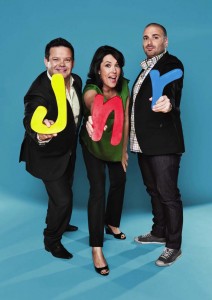Encore Annual 2010: Year in tv
 It may not have been entirely obvious at the time, but 2010 was the year Australia’s TV landscape changed. Tim Burrowes reports.
It may not have been entirely obvious at the time, but 2010 was the year Australia’s TV landscape changed. Tim Burrowes reports.
With the exception of its launch more than half a century ago, 2010 saw the most dramatic change for television in the shortest amount of time.
It was driven by the launch of the free to air digital channels. Their arrival may not yet have changed the landscape as much as subscription television did, but their impact has been felt much more swiftly.
The first of the spin-off digital channels launched in the second half of 2009, with Ten opting for sports content with One, Seven launching 7Two and Nine choosing Go!
With digital penetration initially relatively low, their impact in 2009 was initially minimal, but by the beginning of 2010 it was becoming more obvious.
The opening weeks of the 2010 ratings year saw lower numbers across the board. Observers were divided on whether the phenomenon was caused by changes to the OzTam ratings panels, cannibalisation of the primary channels by the new arrivals, or simply changes to viewing habits as media fragmentation accelerated.
In the end it was – at least in part – something else entirely. The slow return to Australian screens of local content in 2010 because networks feared to bring out their big guns until the winter Olympics were out of the way.
But come April, ratings finally improved – not entirely, but enough to be a relief to the TV industry. However, the days when a hit has to rate more than 2m metro viewers are gone. 1.5m is doing very well now. Indeed, 2010 was the year where anything above 1m became an acceptable performance.
And to achieve a hit, it almost always had to be local content.
For Nine, it was Underbelly. For Seven it was Packed To The Rafters and for Ten it was – of course – MasterChef.
Underbelly: The Golden Mile debuted with 2.237m viewers.
But local content was not a universal winner. The same week, the return of Seven’s Australia’s Got Talent found itself beaten into second place by Nine’s expensive UK acquisition of Top Gear. (Later in the year, Nine was to find that its local version of Top Gear was itself no match in viewer affections for the original.)
Also launching in April was the return of Nine’s variety show Hey Hey It’s Saturday. Despite a 1.5m debut, ratings quickly faded to well below 1m. The show was rested
half way through the series and returned in the less competitive Saturday night slot. It remains to be seen if it will get another series in 2011.
Ten, meanwhile, double dipped with MasterChef. The second series of the cooking competition continued to draw massive audiences. The final was viewed by 3.962m
viewers – a number that only five months later already seems inconceivably large.
The final also included a trailer for Junior MasterChef. The public reaction was so positive that Ten brought forward its planned launch date for the show until before its Commonwealth Games coverage.
It debuted with 2.2m, but lost ground after being put on pause for the games, which was itself a disappointment for Ten in terms of numbers. But Junior MasterChef still finished with a healthy finale of nearly 2m. It was enough to earn the show a recommission.
By then though, the digital channels were beginning to bite – although not all of them.
RISE OF THE DIGITALS
Ten’s sports channel only tended to deliver decent audiences for its Sunday night Formula One races. The network’s management has always argued that One’s presence is strategic – to stake out territory ready for when more content becomes available and the antisiphoning rules changed to allow more content to be broadcast on the secondary channels.
Another disappointment in audience terms was ABC News 24. Launched just in time for the election, the channel languishes with an audience share of less than 1 percent.
For Nine though, Go has gradually gained ground, driven by US imports. Nine’s newer secondary channel GEM (General Entertainment and Movies) has been slower to take.
It was the same story for Seven’s 7Two and Mate. By the end of 2010, only Ten is yet to jump with its next channel, although it announced that Eleven would launch in January – and with the bold move of switching The Simpsons and Neighbours across from Ten, with an extended run of national and local news to fill the hole.
Despite the incomplete digital line-up, the audience fragmentation is already well under way.

